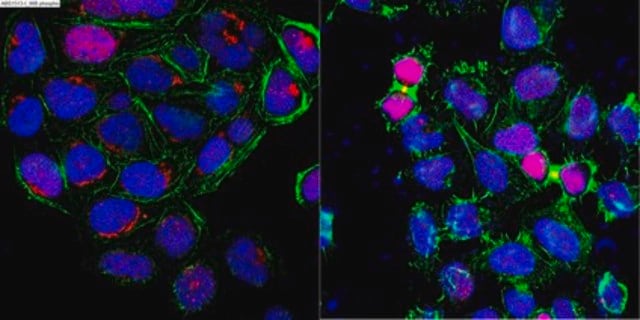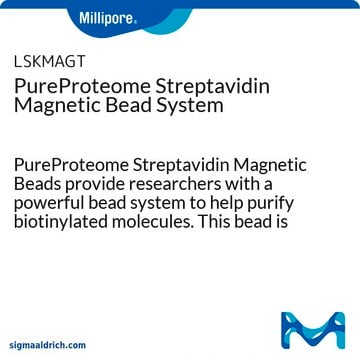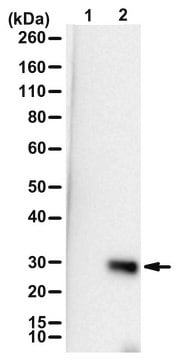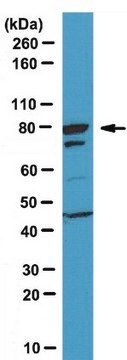ABS1513-I-AF488
Anti-phospho-Ubiquitin Antibody (Ser65), Alexa Fluor™ 488 Conjugate
from rabbit, ALEXA FLUOR™ 488
Sinônimo(s):
Ubiqutin, Ser65 phosphorylated, Ub, Ser65 phosphorylated
About This Item
Produtos recomendados
fonte biológica
rabbit
Nível de qualidade
conjugado
ALEXA FLUOR™ 488
forma do anticorpo
affinity isolated antibody
tipo de produto de anticorpo
primary antibodies
clone
polyclonal
reatividade de espécies
human
reatividade da espécie (prevista por homologia)
guinea pig (based on 100% sequence homology), bovine (based on 100% sequence homology), hamster (based on 100% sequence homology), mouse (based on 100% sequence homology), sheep (based on 100% sequence homology), rat (based on 100% sequence homology), nonhuman primates (based on 100% sequence homology), horse (based on 100% sequence homology)
técnica(s)
immunocytochemistry: suitable
nº de adesão UniProt
Condições de expedição
ambient
modificação pós-traducional do alvo
phosphorylation (pSer65)
Informações sobre genes
human ... UBB(7314)
Descrição geral
Especificidade
Imunogênio
Aplicação
Signaling
Qualidade
Immunocytochemistry Analysis: A 1:100 dilution of this antibody detected CCCP treatment-induced ubiquitin Ser65 phosphorylation in PINK1-expressing HeLa cells.
Descrição-alvo
forma física
Armazenamento e estabilidade
Outras notas
Informações legais
Exoneração de responsabilidade
Not finding the right product?
Try our Ferramenta de seleção de produtos.
Código de classe de armazenamento
12 - Non Combustible Liquids
Classe de risco de água (WGK)
WGK 2
Certificados de análise (COA)
Busque Certificados de análise (COA) digitando o Número do Lote do produto. Os números de lote e remessa podem ser encontrados no rótulo de um produto após a palavra “Lot” ou “Batch”.
Já possui este produto?
Encontre a documentação dos produtos que você adquiriu recentemente na biblioteca de documentos.
Nossa equipe de cientistas tem experiência em todas as áreas de pesquisa, incluindo Life Sciences, ciência de materiais, síntese química, cromatografia, química analítica e muitas outras.
Entre em contato com a assistência técnica






